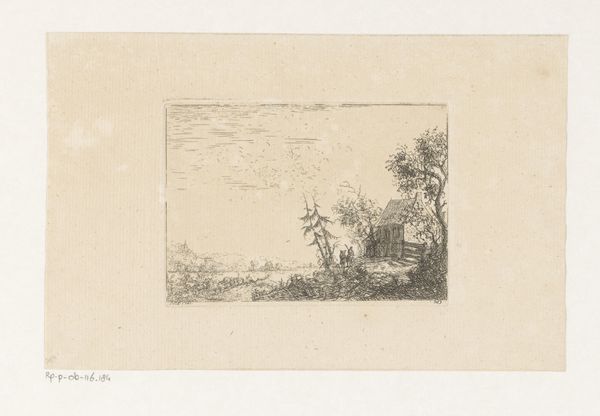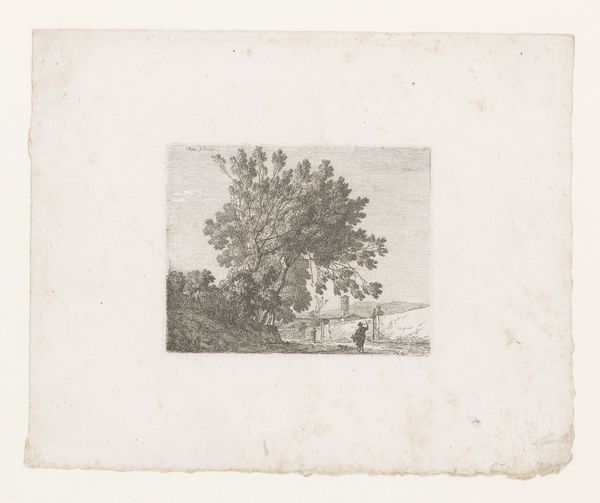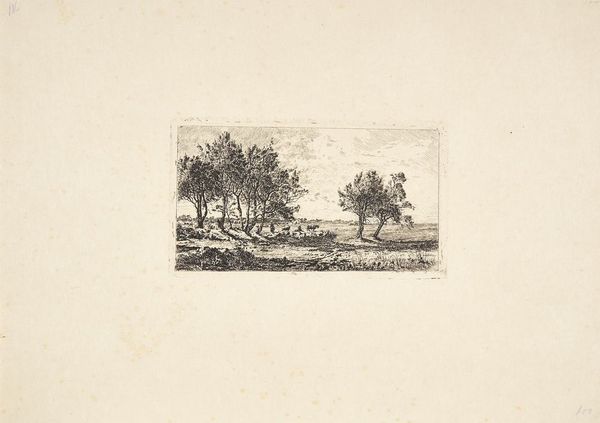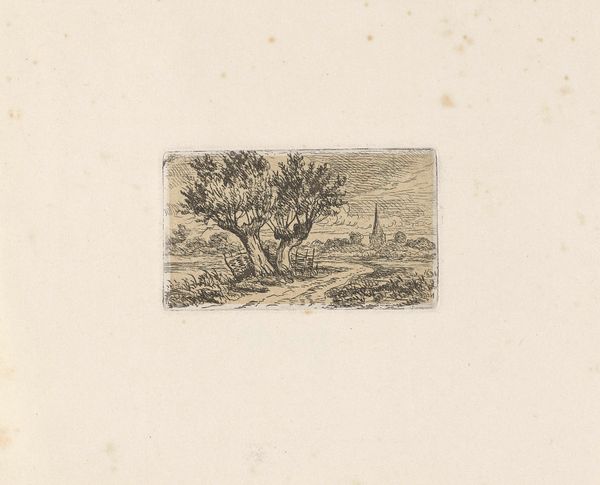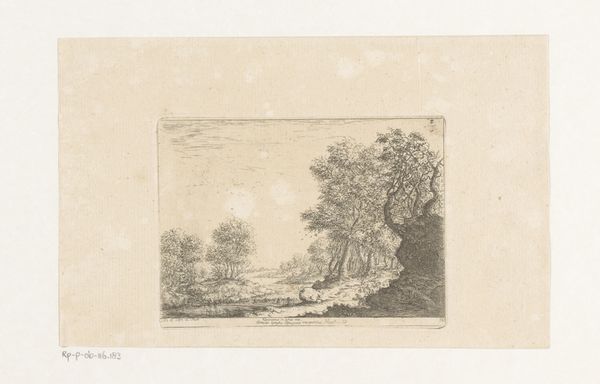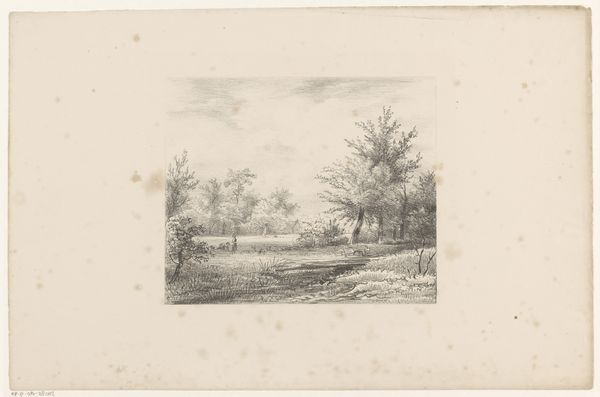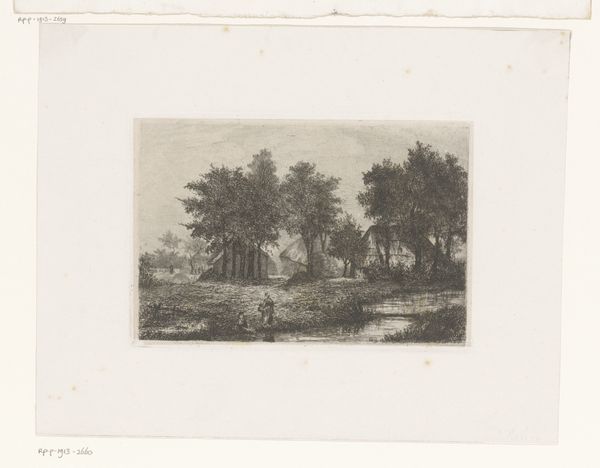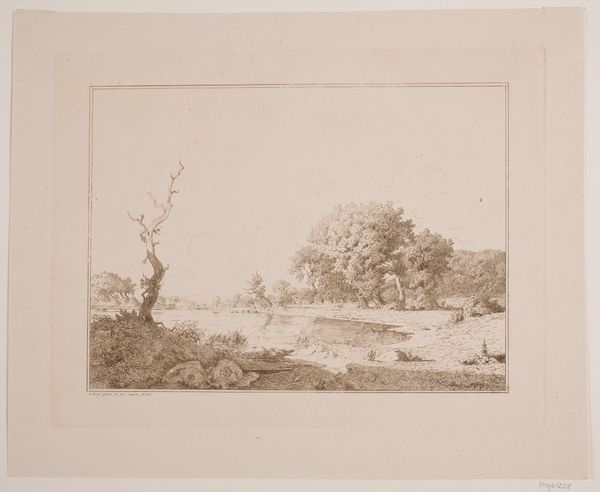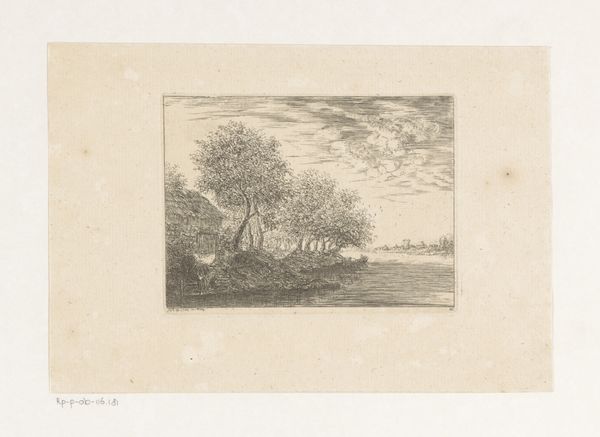
Dimensions: height 305 mm, height 465 mm
Copyright: Rijks Museum: Open Domain
Curator: Welcome, everyone. We're standing before Christiaan Immerzeel's "Landschap met bomen en watermolen," or "Landscape with trees and watermill," which dates from between 1847 and 1863. It's currently housed here at the Rijksmuseum, rendered in pencil. Editor: My initial reaction is one of calm. The subdued tones and composition create a quiet, pastoral mood, almost dreamlike. Curator: It absolutely embodies the spirit of Romanticism, doesn't it? We see a strong emphasis on the sublime, that overwhelming power of nature. The watermill, though present, feels almost secondary to the organic forms surrounding it. There's an underlying commentary, perhaps, on industrialization encroaching on untouched landscapes. Editor: Agreed. I'm particularly interested in the artist's technique. You can see where Immerzeel built up tone and texture through subtle layering of the pencil marks, almost caressing the paper. He seems interested in pushing what is traditionally considered "high art" medium to its utter potential. The choice of a watermill is compelling as a machine utilizing the material strength of nature. Curator: Indeed, the socio-political context is vital. Consider the rise of landscape painting as a genre during this period and its role in fostering national identity. These images played a key role in shaping Dutch national consciousness. They promoted a sense of shared heritage tied to the land. Editor: And let’s consider access. A drawing, even of this scale, offers a portability lacking in larger, heavier oil paintings. It suggests accessibility, even mass production if we think of the role prints would play later in the 19th Century. The reproduction of this landscape allowed a much wider audience to possess it. Curator: Fascinating! It truly emphasizes how even seemingly simple pencil drawings played a vital role in the artistic and social landscape of their time. Editor: Absolutely. Looking at the work now, I’m left with a heightened awareness of not just the landscape it portrays, but also the hands that crafted it, and the means of production that distributed this calm view to the public.
Comments
No comments
Be the first to comment and join the conversation on the ultimate creative platform.

